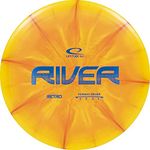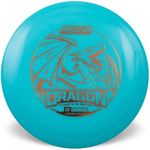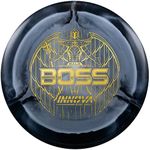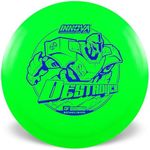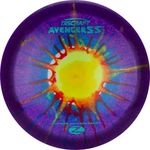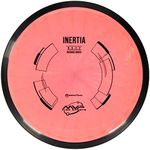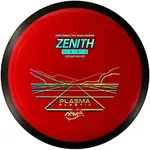Buying Guide for the Best Distance Driver Disc Golfs
Choosing the right distance driver for disc golf can significantly impact your game. Distance drivers are designed to cover long distances and are typically used for tee shots or long fairway throws. When selecting a distance driver, it's important to consider various specifications that can affect the disc's flight characteristics and how well it suits your playing style and skill level. Understanding these key specs will help you make an informed decision and find the best fit for your needs.SpeedSpeed is a measure of how fast the disc needs to be thrown to achieve its intended flight. It ranges from 1 to 14, with higher numbers indicating faster discs. Speed is important because it affects how far the disc can travel and how it handles wind. Beginners should start with lower speed discs (6-9) as they are easier to control, while more advanced players can handle higher speed discs (10-14) for maximum distance.
GlideGlide measures the disc's ability to maintain loft during flight, ranging from 1 to 7. Higher glide numbers mean the disc will stay in the air longer, which is beneficial for achieving greater distances. Players looking for maximum distance should opt for discs with higher glide (5-7), while those who prioritize control over distance might prefer lower glide (1-4).
TurnTurn indicates the disc's tendency to curve to the right (for right-handed backhand throws) during the initial part of its flight. It ranges from +1 to -5, with negative numbers indicating more turn. Turn is important for shaping shots and avoiding obstacles. Beginners or players with slower arm speeds should look for discs with more turn (-2 to -5) to help achieve straighter flights, while advanced players might prefer less turn (0 to -1) for more predictability.
FadeFade describes the disc's tendency to hook left (for right-handed backhand throws) at the end of its flight. It ranges from 0 to 5, with higher numbers indicating more fade. Fade is crucial for controlling the disc's landing and avoiding overshooting the target. Beginners should choose discs with less fade (0-2) for straighter finishes, while experienced players might prefer more fade (3-5) for sharper, more controlled landings.
WeightWeight affects the disc's stability and how it handles wind. Discs typically range from 150 to 180 grams. Lighter discs (150-165 grams) are easier to throw and can achieve greater distances for players with slower arm speeds, making them ideal for beginners. Heavier discs (165-180 grams) offer more stability and control, which is beneficial for advanced players and windy conditions.
Plastic TypePlastic type influences the disc's durability, grip, and flight characteristics. There are various types of plastics, ranging from basic to premium. Basic plastics are more affordable and provide good grip but wear out faster. Premium plastics are more durable and maintain flight characteristics longer but can be more expensive. Beginners might start with basic plastics to learn the game, while more experienced players might invest in premium plastics for consistent performance.
